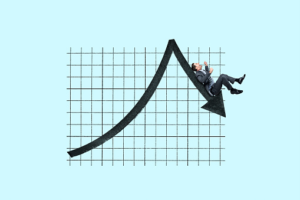It has been a volatile start to 2022. The pivot by the Federal Reserve from an easing to tightening policy has been a key reason behind the market gyrations.
Investors are changing their game plan, moving from high-growth tech names into cyclicals that can perform better in a rising rate environment. This rotation is creating uncertainty as we deal with supply chain constraints, omicron disruptions, and geopolitical turmoil.
While stock pickers can thrive in volatility (or crash), it is not for everyone. Passive Fund managers look for different vehicles to park cash. They do not want to leave the market but prefer instruments with the most liquidity. This is known as the SPY Liquidity Premium which is a concept we will discuss another day.
But here is the rub with this philosophy- we understand that there is a rotation from tech to cyclicals, if I want to buy the SPY to avoid some of these disturbances, do I really avoid volatility?

The growth of the tech industry has distorted some of the balances in the S&P. The top eight names in the SPY weighting are all tech and makeup 25% of the ETF:
- Apple (AAPL) 6.85%
- Microsoft (MSFT) 6.29%
- Amazon (AMZN) +3.63%
- Alphabet Class A (GOOGL) 2.7%
- Tesla (TSLA) 2.15%
- Alphabet Class C (GOOG) 2.01%
- Metaverse (FB) 2.01%
- Nvidia (NVDA) 1.82%
The latest Bank of America Fund Manager Survey showed that 39% of respondents saw Long U.S. tech as the most overcrowded trade. The potential for further downside remains.
Is there another index ETF that can help me avoid some volatility and still take advantage of the rotation in equities?
Invesco’s S&P Equal Weight ETF (RSP) provides an interesting alternative to the SPY.
The RSP takes all the stocks in the S&P and weights them equally. This will increase the footprint of smaller S&P stocks which does result in a higher beta. Beta is a way of measuring a stock’s volatility compared with overall market volatility. However, it will reduce concentration in Information Technology. The higher beta could be worthwhile given the current rotation.
Here is the Sector weighting for the RSP vs SPY:
-
- Financials- RSP 18.9% vs SPY 12.2%
- Consumer Cyclicals- 15.6% vs 15.4%
- Technology- 15.1% vs 37.8%
- Industrials- 14.8% vs 7.7%
- Healthcare- 11.2% vs 13.1%
- Consumer Non-cyclical- 6.7% vs 5.7%
- Utilities- 5.3% vs 2.1%
- Energy- 5.2% vs 2.5%
- Basic Materials- 5.1% vs 1.8%
- Telecommunication Services- 0.5% vs 1.3%
As you can see, the RSP increases investor’s exposure to Financials, Industrials, Basic Materials, Energy, and Utilities while reducing reliance on IT. This would allow investors to ride out the current storm and position into cyclicals.
Other key comparisons (RSP vs SPY):
-
- Assets Under Management- RSP $32.8 bln vs SPY $442 bln
- Average Daily $ Volume- $507 mln vs $33 bln
- Expense Ratio- 0.20% vs 0.09%
- Distribution Yield 1.29% vs vs 1.23%
Looking at Performance (RSP vs SPY):
-
- 1 month- RSP 2.81% vs SPY 0.65%
- 3-month 4.44% vs 5.40%
- 1-year- 23.9% vs 24.44%
- 10-year- 14.8% vs 15.9%
- Since 2004- 9.74% vs 9.55%
We can see that the RSP can not match the SPY in terms of liquidity. Nothing can. The SPY has a cheaper expense ratio providing it a slim advantage (You pay $9 per $10K vs $20). The distribution yield is slightly in favor of the RSP. Income investors will not retire on these returns but it does pay us while we watch the market action from our safe haven.
The performance is interesting. Naturally, the tech-weighted SPY has been outperforming the RSP over the past 10 years. Tech has been the dominant force. But we are looking for a way to avoid reliance on tech. The RSP has outperformed the SPY since its inception in 2004.
The decision comes down to how you view the market. Are we setting up for a larger decline that will see further carnage? Or is this part of the normal growing pains for a market transitioning from growth to cyclical names?
If you are in the latter camp, then you may want to take a look at the RSP and use that as a way to outperform the investors who are piling into the SPY.

